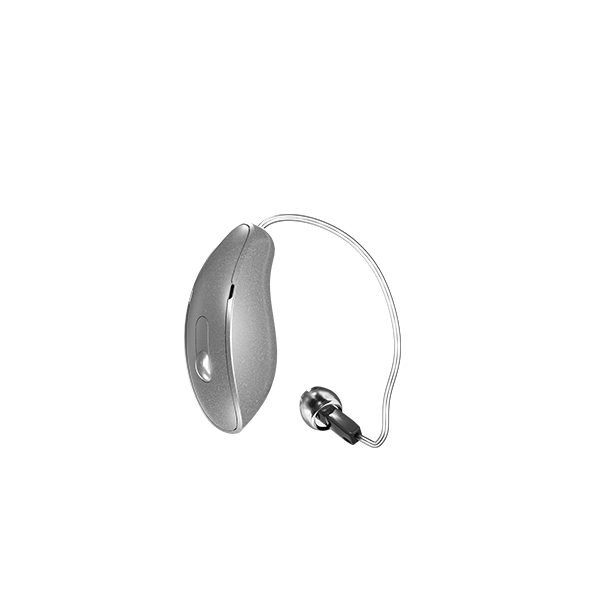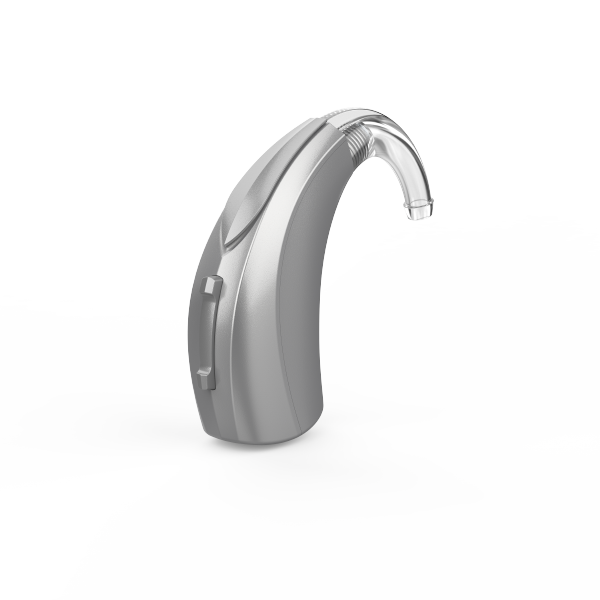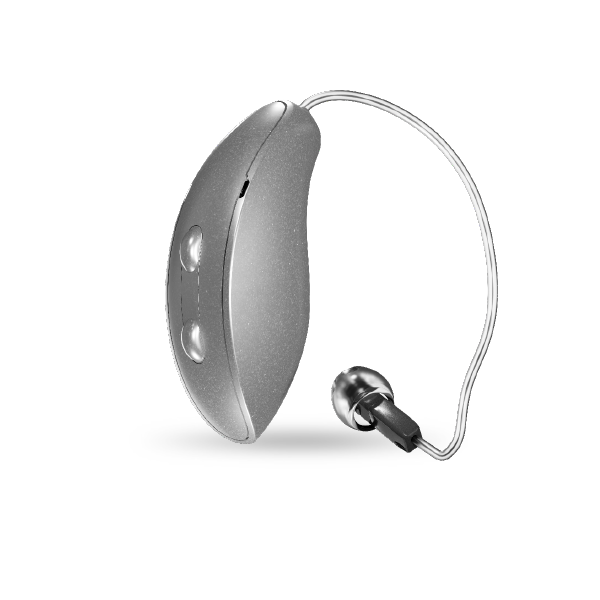Over-the-ear
Over-the-ear hearing aids are the most common style. The reason is because they are the most versatile. They fit most ears both physically and can support a wide range of hearing power needs due to added space for technology to be housed behind the ear. However, these are not large hearing aids. Over-the-ear hearing aids have shrunk in size and are virtually invisible (especially for people with longer hair).
Over-the-ear vs In-the-ear
| Benefits | In-the-ear | Over-the-ear |
|---|---|---|
| Light, airy fit: Only a soft tip attached to a tube or wire rests within the ear canal. | ✓ | |
| Quick fit: These devices require little customization to the physical device. | ✓ | |
| Treats a wide range of hearing loss: Easily stores all power and technology needed for all levels of needed amplification. | ✓ | |
| Easy to fix: Wires, receivers and soft tip buds are easily changed out for quick repairs. | ✓ | |
| Doesn’t interfere with glasses, hats, or masks: With the entire device fitting within the ear, nothing can be tangled or cause pressure. | ✓ | |
| Natural acoustics: The ear is the best microphone. These products still use the natural shape of the ear for direction identification. | ✓ | |
| Great for individuals with dexterity challenges: These devices are easier to grab and correctly place. | ✓ | |
| Discrete look: When the entire device is within your ear, nothing stands out. | ✓ |





